Thursday, April 29, 2004
Canon G1 and G3 Closeups
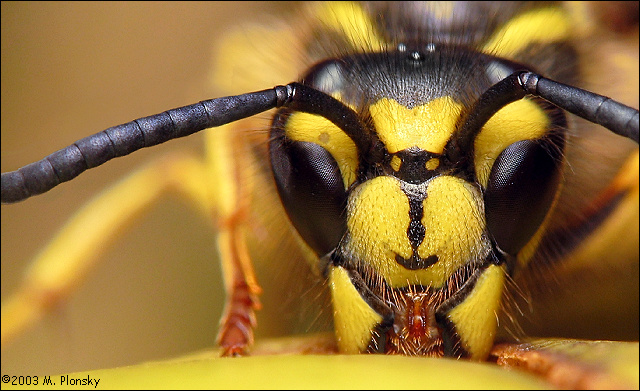
Photo (c) M. Plonsky
What kind of closeups can you take with Canon G1 and G3 point and shoot digital cameras? The insect photos at M. Plonsky's website are a good example. The site has a one page tutorial on macro photography with the G1 and G3. You can see more of Plonsky's work in the galleries posted at PBase.
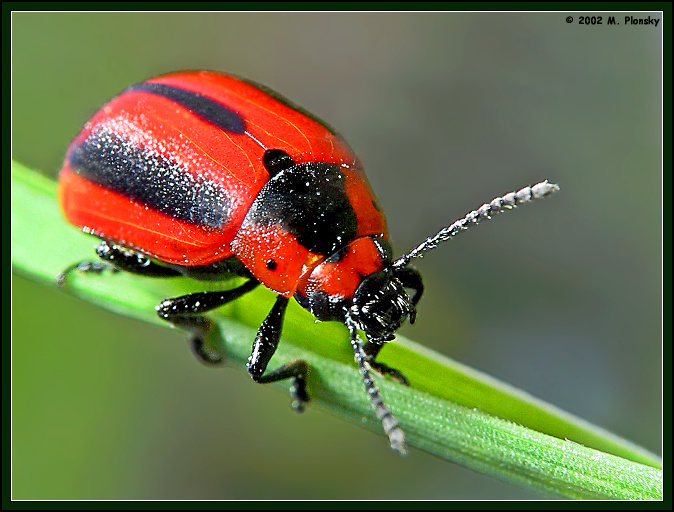
Monday, April 26, 2004
PHOTOS FADING FROM CD-R Discs
The dyes that record your digital photos on CD-R discs may be fading away even as you read this.
Are you backing up your photos on CD-R discs? You should since every hard drive will eventually crash. BUT those photos on CD's may not last as long as you think. In recent tests (see the links below), some brands of CD-R discs lose their data in as little as 2 years. Whatever you do, don't buy cheap discs. And you should store your data on at least two CD-R discs which are stored under the right conditions (coll, dark, dry) in at least two separate locations.
Other options are to store your photos on multiple internal and/or external hard drives. DVD's are an option too but some DVD's may not be much better than the cheap CD-R discs. Again, buy good quality. One of the best currently available options are the Mitsui Gold CD-R discs which you can get from InkjetArt. Paying more for top quality discs is better than discovering your digital photos have faded away to nothing. Don't assume your data is safe for anywhere near as long as the claims you read. Go back periodically and check your discs.
Another option is turn your best digital photos into prints and copy the prints onto high quality slide film. Recent Kodak or Fuji slide film, if stored in a cool (70 degrees or less), dark, low humidity (40% or less) place will outlast the vast majority of digital storage media now available.
You can read some recent research at news.independent.co.uk. They have links to two other articles here and here.
You should also read the article on storing photos on CD-R discs at my website.
Thursday, April 22, 2004
Neat Image 4.0
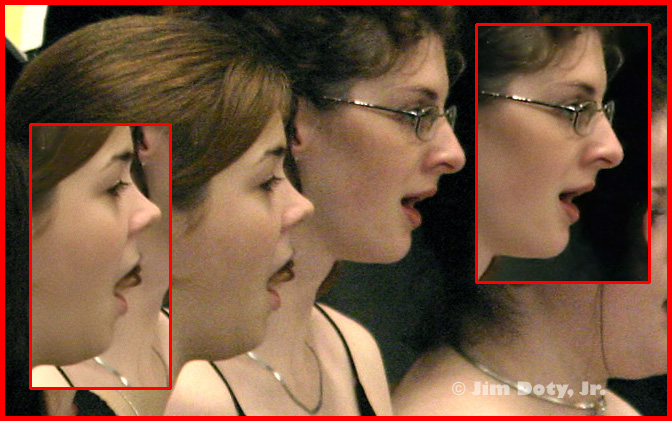
A crop of the image below, but before filtering. The insets show "filtered" portions of the image.
Version 4.0 of Neat Image software was released earlier this month. There are several versions including a freeware version for non-commercial use. Neat Image is a digital noise filter and it also minimizes grain from scanned film images. The above photo is a crop at 100% (actual pixels) from an original image taken with a Canon 10D at ISO 1600. You can see the grain in the faces, which is actually pretty minimal for 1600 speed. The two insets are from the same image after it has been filtered through Neat Image. The faces look smoother with less digital noise. The complete image is below (filtered and reduced in size).
My review of Neat Image is here.
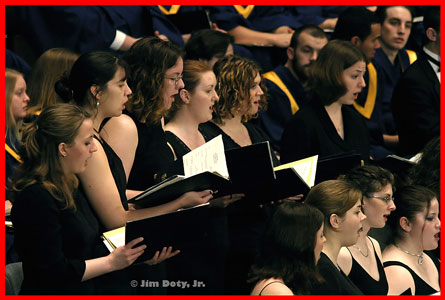
The full, original image after being filtered in Neat Image.
Wednesday, April 21, 2004
8 Megapixels Digicam Reviews at DP Review
At last! Yesterday I wanted full reviews of 8 mp digicams at DP review. This morning they are up.
Here is a quick summary of the conclusions:
Olympus C-8080 - Highly Recommended
Konica Minolta DiMAGE A2 - Recommended
Canon PowerShot Pro1 - Recommended
Nikon Coolpix 8700 - Recommended
Sony Cybershot DSC-F828 - Recommended
Highly Recommended is the top rating, followed by Recommended, Above Average, Average, and Below Avergage. I recommend picking a digital camera that receives a "Recommended" or "Highly Recommended" rating from DP Review.
These results are both surprising and disappointing. I must say that none of these cameras has all the features I want in an 8 megapixel camera. What I want already exists, just in 2 or 3 different cameras. What do I want? High image quality, 28-200 mm lens (35 mm equivalent), image stabilization, fast lens apertures, a buffer for raw files (no waiting to take 3 or 4 photos in fast succession), manual lens zooming, convenient manual focus, good close up ability, touch the shutter to go instantly back to shooting mode from any other mode, and intuitive controls. Maybe the next generation of 8 megapixel digicams will have everything, or almost everything in one camera.
Are these bad cameras? No, they are very good cameras. It is just that I have a good digicam already and none of these has the right combinations of features to compel me to upgrade.
But that shouldn't stop you. One of these cameras may be just what you want. Read the reviews linked below and decide for yourself.
Image quaility from all these cameras is good, with some image attribute variations from camera to camera.
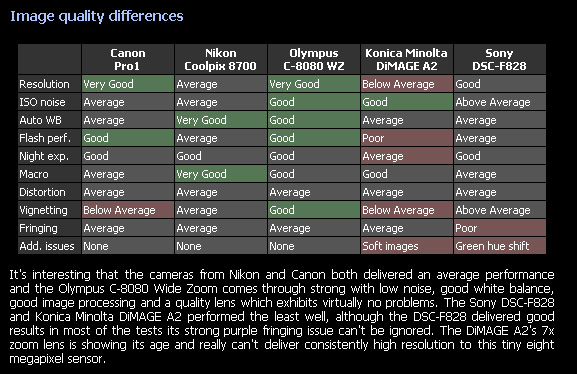
Image Quality Comparison Chart (c) DP Review
To recap my comments from yesterday, Reichmann likes these cameras in this order: The Minolta and Sony are his favorites with the Minolta edging out the Sony. The Canon is his middle of the road pick. The Olympus and Nikon are at the bottom of Reichmann's list. It will be interesting to compare reviews.
Here are links for reviews at both sites:

DP Review: Olympus C-8080
Luminous Landscape: Olympus C-8080
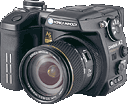
DP Review: Konica Minolta DiMAGE A2
Luminous Landscape: Konica Minolta DiMAGE A2
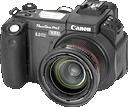
DP Review: Canon PowerShot Pro1
Luminous Landscape: Canon PowerShot Pro1
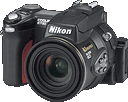
DP Review: Nikon Coolpix 8700
Luminous Landscape: Nikon Coolpix 8700 Non-Review
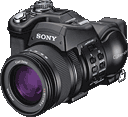
DP Review: Sony Cybershot DSC-F828
Luminous Landscape: Sony Cybershot DSC-F828
Tuesday, April 20, 2004
8 Megapixel Digicams Compared
Michael Reichmann has reviewed (or in one case almost reviewed) the 8 megapixel digicams from Minolta, Sony, Canon, Olympus and Nikon. So which did he like best? Go back and read the prior list in order.
He prefers the Minolta and Sony as the best in the group, places the Canon in the middle, and finds the Olympus and Nikon disappointing. Why? Read his comparisons of the group, as well as the individual reviews (linked from the top of his article). Reichmann is not the final answer - nor does he claim to be - but his opinions are well worth considering.
I am anxiously awaiting the appearance of full reviews from DP Review.
PHOTOSIG.com
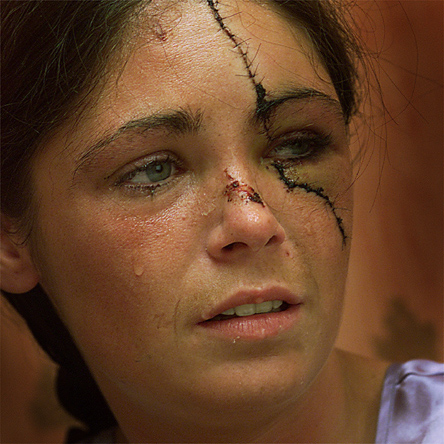
Victim of a Belfast girl gang. Photo copyright Thomas McMullan.
This photo is featured among the highest rated at the Photosig photo sharing site. Some stunning work is posted at this site and it is worth looking at from time to time.
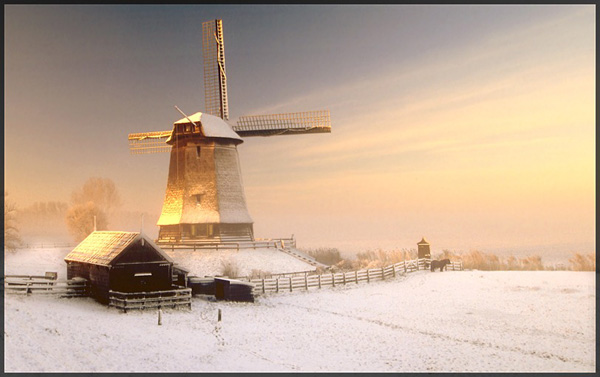
Windmill near Schermerhorn. Photo copyright Jaap Hart.
Saturday, April 17, 2004
EDITING 16,000 SUPER BOWL PHOTOS
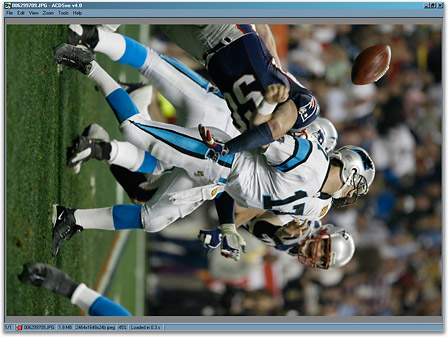
Viewing a single image in full-screen mode in ACDSee software. Super Bowl XXXVIII photo taken with a Canon EOS-1D by Bob Rosato, Sports Illustrated staff photographer.
Keeping track of digital images is a problem. I have taken 25,000 digital photos in the last 12 months. It takes time to go through them all, toss out the bad and mediocre ones, decide how to organize the keepers, caption them, and then burn them all to disc.
I covered a church convention for a religious periodical earlier this month. I took over 3,500 photos in 10 days. Every night I would download all the photos from CF card to laptop, do a preliminary edit and throw out all of the bad shots, pick around 100-150 of the day's best, and burn them to disc for the editors. Then I would pick 40-60 photos from the day to post online for friends to view (see the World Conference albums). Finally I would pick a handful of photos to illustrate daily conference reports written by my brother-in-law. This whole process - usually called "digital workflow" - would take at least a couple of hours per day.
So what would you do if you had to deal with 16,183 digital pictures taken by eleven photographers in the space of around 6 hours? Ask the photo editors of Sports Illustrated magazine.
And that is just part of a bigger challenge, dealing with over 1 million digital photos submitted each year to SI (and over 3 million in an Olympics year). It boggles my mind.
Picture an editor sitting in a trailer at the Super Bowl going through two photos per second for seven hours, picking "selects" for further review. Ouch.
It is not easy on the photographers either. There is all the the pressure of getting the great shot. As a side note, the equipment an SI photographer takes to a football or basketball game is staggering. "Staff photographer Bob Rosato's collection of gear is fairly typical. To a football game he takes four or five EOS-1D bodies and 600mm f/4, 400mm f/2.8, 300mm f/2.8, 70-200mm f/2.8, and 50mm f/1.4 lenses. For basketball, he adds five or six EOS-1Ds cameras and dispenses with the 400 and 600mm lenses. Of the ten or so camera bodies that he takes to a basketball game, many are of course mounted overhead or around the basket for remote operation." ( Sports Illustrated's digital workflow by Eamon Hickey)
The whole proces is really quite a story. Read it all here. My apologies in advance for some words I would prefer they did not use.
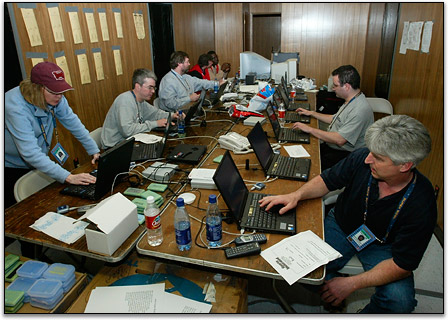
Downloading incoming Super Bowl XXXVIII photos to 10 IBM T40 laptops in the Sports llustrated media trailer outside Houston's Reliant Stadium. (Photo by Eamon Hickey/Little Guy Media)
Monday, April 12, 2004
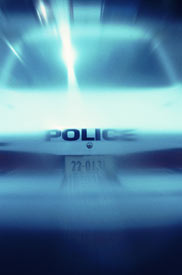
Photo from NYIP.com
TAKING PHOTOS OUTDOORS WITHOUT GETTING IN TROUBLE
I have taken a lot of photos outside without getting into trouble. A sheriff once stopped when I was taking late evening photos from a bridge, but he just reminded me not to accidentally step out into traffic.
Since 9/11, things have changed and more caution is in order than in the past. I still don't get into trouble but I think twice about situations where I might be viewed as a public threat (like taking photos from bridges). Read this article from the New York Institute of Photography web site (NYIP.com).
Saturday, April 10, 2004
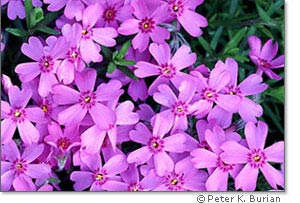 Outdoor Photography Techniques
Outdoor Photography Techniques
Pro Tips for Great Nature Images
By Peter K. Burian
Go here to read this article.

Friday, April 09, 2004
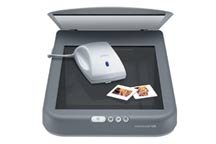
Epson Perfection 1260 Photo Scanner for $45
GOOD SCANNER - GREAT PRICE
Looking for your first flatbed photo scanner, or an inexpensive backup? This might be just what you want.
Epson is selling the Epson Perfection 1260 PHOTO Scanner in their clearance center for a closeout price of $45 while supplies last. This is a good quality flatbed scanner if you want to scan photographic prints to turn them into high quality digital files. These files can then be shared, emailed, altered, corrected, posted on the internet, or printed on a digital printer.
This scanner has enough resolution for turning small prints into larger prints. You can scan a 3x5 and turn it into a 5x7 or scan a 5x7 and turn it into an 8x10. With sufficient quality in the original print, you might be able to go two sizes larger. The original print must be of good quality to do this. You can't scan a mushy looking 3x5 and turn it into a good looking 8x10. With a mushy 3x5 you will end up with a really mushy 8x10. And that is true of any scanner at any price.
The Epson Perfection series of scanners has a very good quality reputation.
The Epson 260 scanner has 1200 x 2400 dpi resolution and 48-bit color depth which is good in and of itself and very good at this price.
This scanner comes with a 35 mm slide adapter for scanning slides. This will only work if you need small size files for posting on the internet, or for turning slides into small prints (3x5 or maybe 5x7 inches). This scanner does not have enough resolution for turning slides into large prints (8x10 inches or larger). This depends, of course, about how fussy you are about the quality of your prints. If you want to scan slides and make large prints, you will need to get a true film scanner or a very expensive flatbed scanner that is well suited to this task.
The scanner comes with a one year warranty. Details are at the Epson link below.
If you are looking for you first flatbed scanner, this is one very good choice.
More information is here.
Monday, April 05, 2004
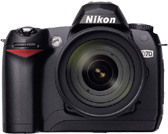 Nikon D70 Review
Nikon D70 Review
The much awaited full review of the Nikon D70 digital SLR was posted today at DP Review.
The D70 is a step up in image quality from the Nikon D100 at a lower price point. If you have a Nikon film SLR camera and Nikon mount lenses and have been thinking about taking the plunge into digital, now might be the time. This is an excellent camera in every respect. It is better in quality in many ways than the Canon Digital Rebel (called the "300D" in some countries). This is good news for Canon camera users since this keeps Canon on its toes for future cameras.
You can read the full review here.
|